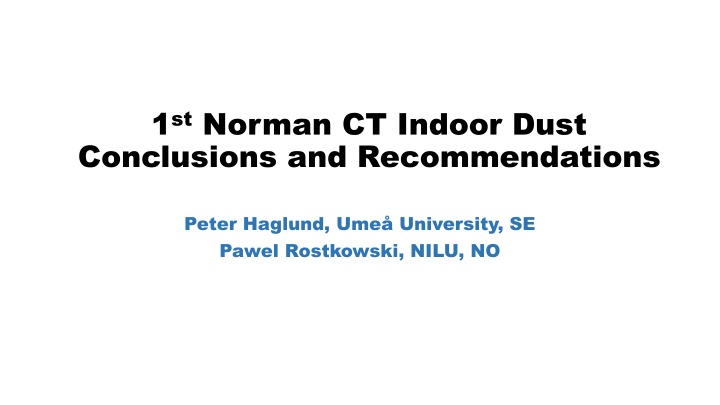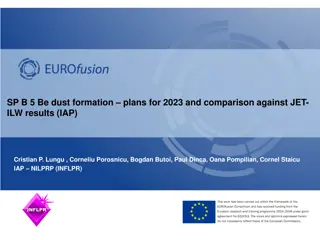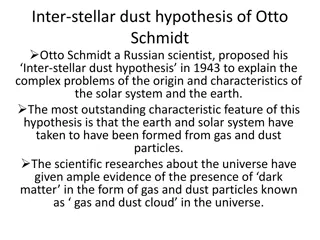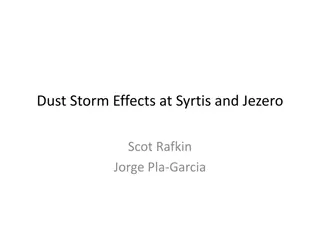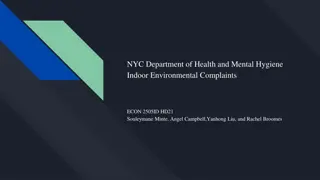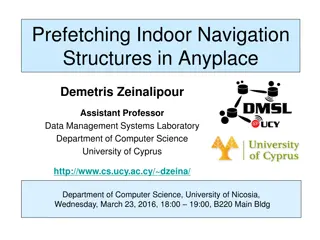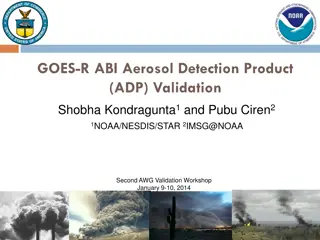Indoor Dust Conclusions and Recommendations
High complementarity between GC and LC techniques for detecting compounds in indoor dust samples. Issues with false positives and one-hit wonders identified in the analysis. Recommendations include increasing detection frequency, using complementary techniques, and implementing rigorous protocols to reduce errors.
Uploaded on Mar 02, 2025 | 1 Views
Download Presentation

Please find below an Image/Link to download the presentation.
The content on the website is provided AS IS for your information and personal use only. It may not be sold, licensed, or shared on other websites without obtaining consent from the author.If you encounter any issues during the download, it is possible that the publisher has removed the file from their server.
You are allowed to download the files provided on this website for personal or commercial use, subject to the condition that they are used lawfully. All files are the property of their respective owners.
The content on the website is provided AS IS for your information and personal use only. It may not be sold, licensed, or shared on other websites without obtaining consent from the author.
E N D
Presentation Transcript
1stNorman CT Indoor Dust Conclusions and Recommendations Peter Haglund, Ume University, SE Pawel Rostkowski, NILU, NO
Main conclusions Main conclusions Many compounds (>2000) detected High complementarity between techniques GC: small non-polar and semi-polar compounds LC: semi-polar and polar compounds GC-ECNI and GC-APCI( ): Halogenated compounds GC-PCI: Confirmation of molecular ions GC GC homologous series of non/semi-polar compounds LC-ESI(+) compounds with high proton affinity (ca 40% amines/amides) Varying success rate - Room for improvement
Main outcome Main outcome SusDat Master List Indoor Dust List
Main concerns Main concerns Many one-hit wonders (compounds reported by only one lab) Quite a few false positives (compounds clearly miss-reported)
Main concerns Main concerns Many one-hit wonders (compounds reported by one lab only) Quite a few false positives (compounds clearly miss-reported) Why?
Recommendations: Recommendations: Increased detection frequency Increased detection frequency Set aside sufficient time! Use complementary techniques/information Consider clean-up (matrix removal) Consider fractionation to reduce complexity Consider multi-dimensional separations Use multiple suspect lists and libraries Use in-silico fragmentation tools for unknowns (incl. meta data) Utilize chem-phys meta-data (RT, polartity, ionizability, etc.) Use retention prediction to support/reject structures Digital Sample Freezing Platform (DSFP) offer (some) automation
Recommendations: Recommendations: Reduce false positives Reduce false positives Set aside sufficient time! Manual review of all reported compounds Check for duplicate structures at different retention times Is the retention time reasonable considering the size/volatility (GC) or polarity (LC) of the candidate structure? Preferably, include retention prediction in workflow Strict protocol for spectra/candidate evaluation Use in-silico fragmentation tools for unknowns (and suspects) Use meta data, e.g. number of papers/patents to rank chemicals (common preferred over rare) Be strict when reporting identification confidence
